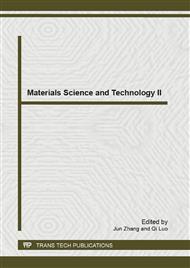p.608
p.614
p.620
p.626
p.632
p.638
p.643
p.648
p.653
Advanced Design for The Bolted Clip-Angle Connection
Abstract:
The main focus of this study is to investigate the clip-angle connections are described the section based on ideal limit states. The connection components are designed in accordance with the 2001 AISC-LRFD Specifications and the 2005 AISC Seismic Provisions. In the suggested clip-angle connection, the structural beam can be connected to the column using six high-strength bolts. The slippage on the shear faying surface contributes to increasing energy dissipated capacity in the connection behavior. The design of the clip-angle connection should include these mechanical characteristics. Therefore, this study presents new design methodology that can be applied to bolted clip-angle connections. Besides, step-by-step procedures for design will be treated herein.
Info:
Periodical:
Pages:
632-637
Citation:
Online since:
July 2013
Authors:
Price:
Сopyright:
© 2013 Trans Tech Publications Ltd. All Rights Reserved
Share:
Citation:


